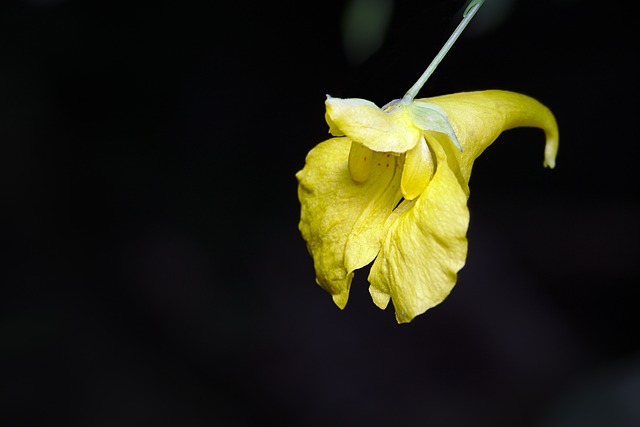 |  |  |    |  |
  |  |
Touch-me-not Balsam is an annual plant of the balsam family that has alternately arranged, elongated, ovate leaves on short petioles with toothed leaf margins. The peculiarity of this plant is that it looks wet even in hot weather, because a transparent solution is released from the edges of its leaves.
Touch-me-not Balsam grows to an average height of 50 cm. The flower has 5 petals, 4 of which are fused together in the wrong shape, has hairs on the underside and is bright yellow in color.
The fruits are elongated boxes with seeds. The plant blooms in June-September. An interesting feature of this plant is that if you touch its ripe seed pod, it bursts open and shoots seeds several meters away.
Seed collection takes place in August and early September. The fruits are dried in the sun and sifted through a sieve to remove the chaff. Flowers and stems are collected during flowering. Cut the shoots 2-3 cm above the ground, dry in well-ventilated rooms, in the shade or in forced dryers not exceeding 40C.
The drug can be stored for 2 years, seeds up to 3 years, in a dry, dark place at room temperature.
Saponins, balsaminosterol, parinoric acid, fatty acids are present in the seeds of Touch-me-not Balsam. The leaves of the Touch-me-not Balsam contain essential oils, alkaloids, tannins, bitter substances, glycosides, ascorbic acid, amino acids, proteins, sugars and other compounds. The flowers also contain kaempferol, quercetin and vitamin C.
Medicinal significance
Touch-me-not Balsam has been known in folk medicine since prehistoric times. Slavic peoples used this plant to treat kidney stones and edema, and as an emetic. The result was provided by correctly determined doses. In India, this plant was used to heal wounds and trophic ulcers. In ancient China, the setting of the Touch-me-not Balsam was used as an emetic and abortifacient, to stimulate childbirth.
Touch-me-not Balsam is known for its anti-inflammatory, anti-edematous, diuretic, astringent, and bleeding-stopping properties. In the case of urinary stone diseases and bladder diseases, the settings of the Touch-me-not Balsam are used. In case of edema, decoctions of linden and flowers, as well as leaf juice and seeds are used. In order to cause the vomiting reflex, use the positions of the louse.
The fresh leaves of the Touch-me-not Balsam have unique anti-inflammatory properties that can be used to treat wounds, trophic ulcers, inflamed skin, dermatitis, eczema and inflammation of hemorrhoidal nodes. In case of rheumatism, a decoction of the Touch-me-not Balsam is used in the bath.
In folk medicine, different peoples use Touch-me-not Balsam in different ways. Only the above-ground part of the plant is used for medicinal purposes. Juice and decoction help heal wounds. It is important to know that to use the Touch-me-not Balsam, you must strictly follow the dosage. The juice is usually mixed no less than 1:10 with water; decoctions are made no stronger than one tablespoon of the drug per glass of water. Stronger doses can cause poisoning.
Touch-me-not Balsam is used in the bath to treat rheumatism and gout.
Touch-me-not Balsam works best to treat kidney diseases. Concentrations and decoctions dissolve stones and facilitate their easier removal.
Correctly prepared Touch-me-not Balsam works wonders: it relieves pain, relieves all kinds of inflammation, helps remove stones and sand from the urinary tract.
